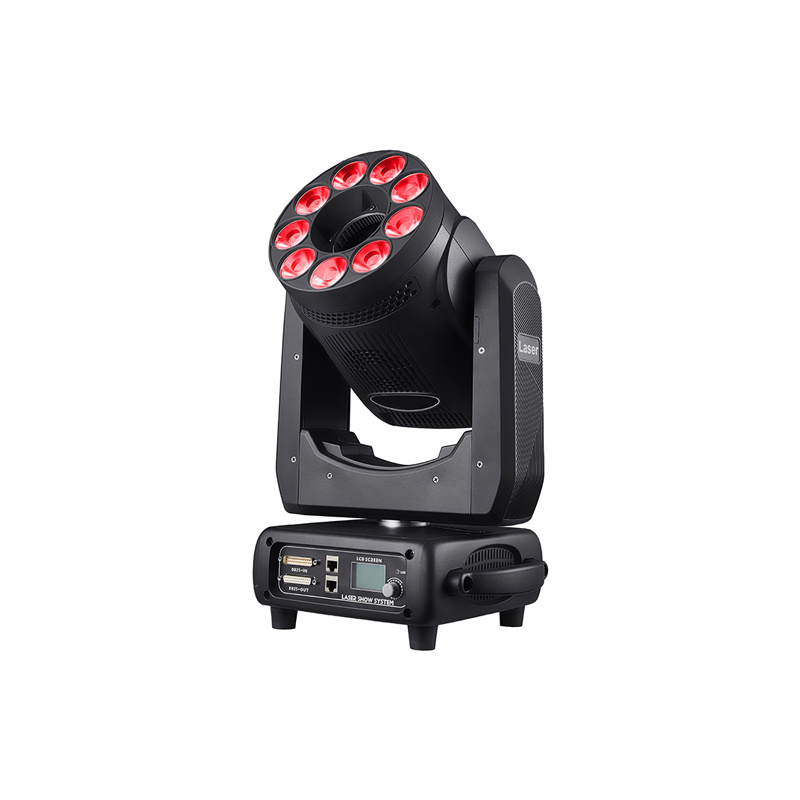Laser Beam Light for Stage & Events | High-Precision Lighting Effects
Classification:
summary description]
Introduction
In today’s high-stakes event production world, it’s not just about lighting a space—it’s about creating moments. And few tools do that better than a laser beam light. Whether you're planning a high-energy music festival or a sleek corporate launch, laser lights bring intensity, focus, and sophistication that traditional lighting can’t quite match.
But what makes laser beam lights so unique? How do they work, and where do they truly shine? Let’s break it all down.
What Exactly is a Laser Beam Light?
Unlike conventional lighting fixtures that disperse light, a laser beam light projects an ultra-focused, coherent beam. This beam travels long distances without losing intensity or sharpness. That’s why you’ll often see them slicing through fog or painting precise shapes across walls, ceilings, or even the sky.
These lights are typically built with laser diodes in red, green, blue, or full-spectrum RGB. With the help of mirrors, galvanometers, or scanning motors, the beams can move rapidly and create intricate visual effects.
Why Are Laser Beam Lights So Effective?
1. Pinpoint Accuracy
Laser lights don’t just shine—they carve through space. Their accuracy makes them ideal for events where detail and direction matter, like branding displays or synchronized light shows.
2. Unmatched Throw Distance
Because of their minimal beam divergence, laser lights maintain clarity over vast distances. That makes them perfect for both indoor arenas and sprawling outdoor stages.
3. Efficient and Powerful
Despite their visual punch, laser beam lights don’t drain power like some older fixtures. With lower energy usage and higher output, they’re both cost-effective and eco-conscious.
4. Customizable and Programmable
Want your beams to dance to the beat? Modern units support DMX512, ILDA, or sound-activated controls. That opens the door for pre-programmed shows or real-time creative tweaks.
5. Compact Yet Durable
Don’t let their small footprint fool you. Most models are housed in rugged casings built for travel, handling, and rapid setup—even under tough touring conditions.
Where You’ll See Laser Beam Lights in Action
Laser beam lights are no longer niche gear. They’re mainstream. Here's where they tend to dominate:
- Music Events & EDM Festivals: These lights bring energy, especially when synced with fog machines and pounding beats.
- Nightclubs: A few rotating beams can instantly elevate a club’s ambiance.
- Stage Plays & Theater: Use them for magical transitions or surreal backdrops.
- Theme Parks: Frequently featured in nighttime spectacles and 4D experiences.
- Product Launches: Laser projection can be used to reveal logos or emphasize key moments.
What to Consider Before Buying One
If you're planning to invest, don't just go for the brightest model. Think about how you’ll use it. Here are a few tips:
Power Output
A unit with 1000mW might be fine for a nightclub, but for outdoor use, you’ll likely need 2W or more to make an impression.
Color Options
Single-color lasers are cost-effective and great for simple setups. But for full creativity, RGB laser beam lights offer far more flexibility.
Compatibility & Control
If you already run a lighting console with DMX, make sure your laser unit can plug into your workflow. Some models also support software-based programming via ILDA.
Safety First
Lasers are powerful. Look for models with built-in safety features—key locks, emergency stop buttons, scan-fail detection. Especially important in public venues.
Cooling System
Lasers can heat up fast. A good cooling system, whether fan-based or thermoelectric, keeps performance stable and extends the lifespan of your unit.
Keeping Your Laser Light in Top Shape
Routine care isn’t hard, but it’s crucial:
- Gently clean the lens with proper cloths—dust can distort the beam.
- Avoid moisture at all costs.
- Store it in a case when transporting.
- Let it cool before packing it away.
With just a little attention, your laser beam light will serve you show after show.
What’s Next for Laser Beam Lighting?
Innovation doesn’t slow down. Some emerging trends in laser beam light tech include:
- Wireless control and app-based operation
- Smaller units with more output
- Greener diodes with lower energy draw
- Integration with kinetic effects and motion rigs
Expect laser lights to become more interactive, more automated, and more accessible in the coming years.
Conclusion
Laser beam lights do more than just brighten a space—they transform it. Their pinpoint control, visual impact, and creative potential make them a favorite among lighting designers, DJs, and event producers.
If you're ready to upgrade your lighting game, a high-quality laser beam light is a smart and future-proof investment. Just be sure to choose the right model for your specific needs—and don’t forget to keep it well-maintained.
FAQs
1. Is it safe to use laser beam lights around people?
Yes, but you must follow proper safety practices. Never aim them directly at the audience, and choose units with built-in safety features.
2. Do laser beam lights work in daylight?
Not effectively. These lights are most impactful in low-light or dark environments where the beams are more visible.
3. Are laser lights better than LED beams?
They’re different tools. Lasers offer precision and sharpness, while LED beams are better for wash and broader effects.
4. Can I install laser beam lights myself?
Some smaller models are plug-and-play, but for more complex setups, professional installation is recommended.
5. How do I sync a laser light with music?
Most modern units support sound-activated modes or can be programmed via DMX or ILDA for precise beat matching.
Previous Page
Previous Page
More Cases


